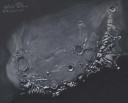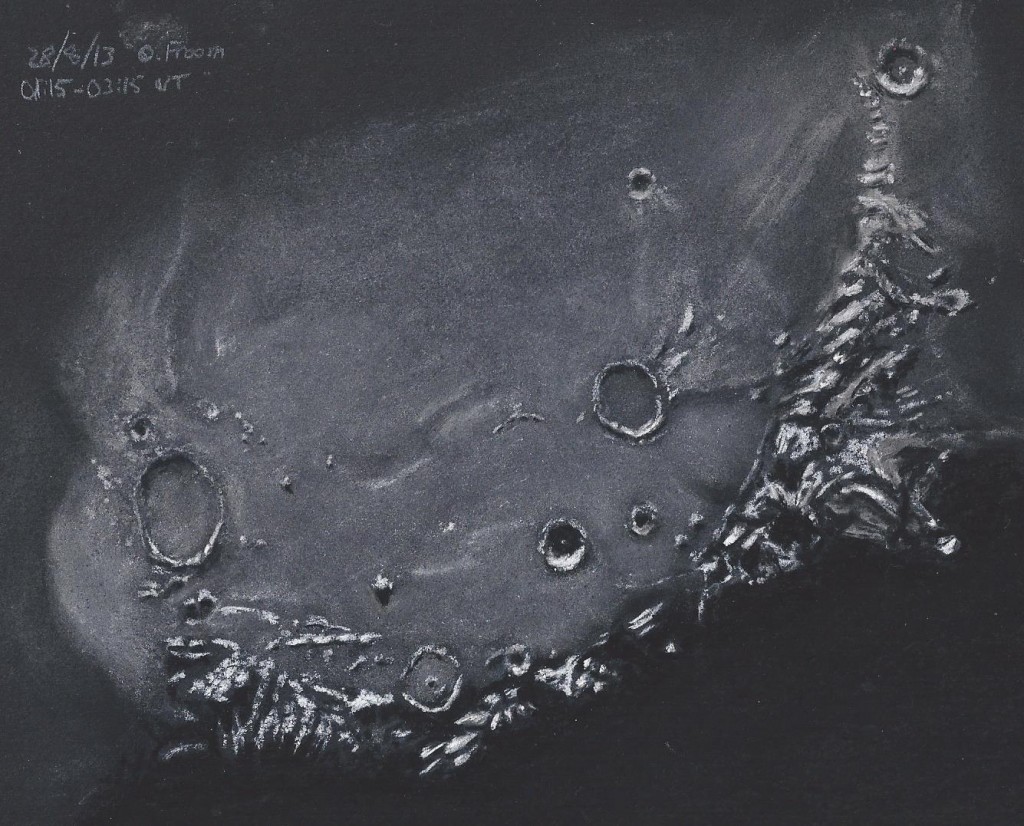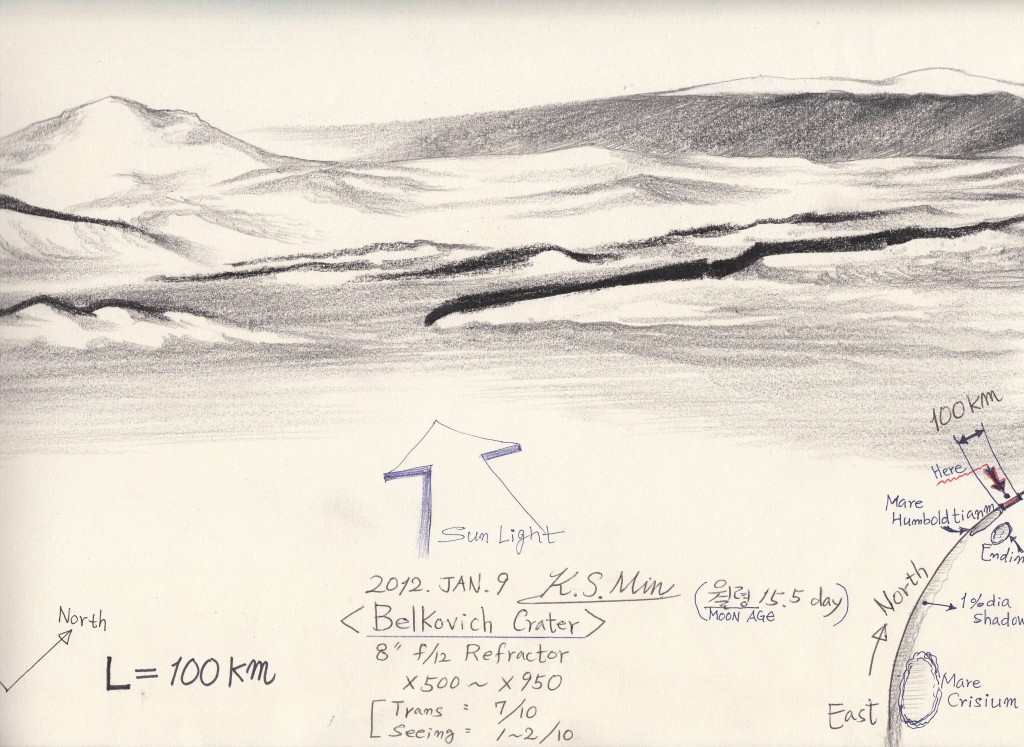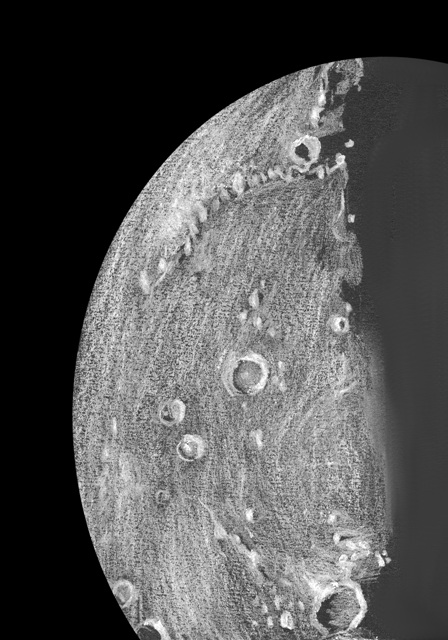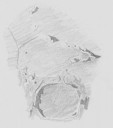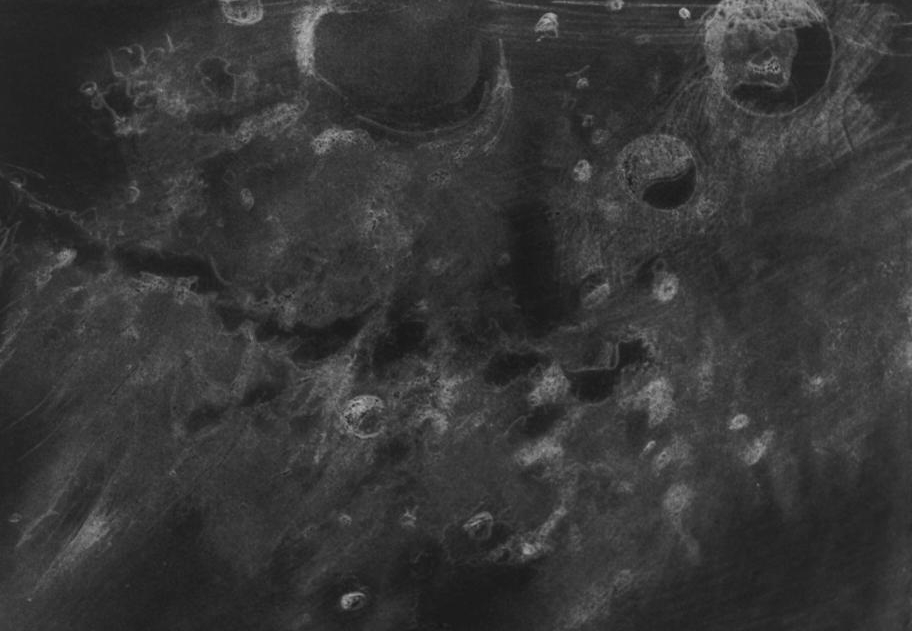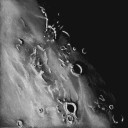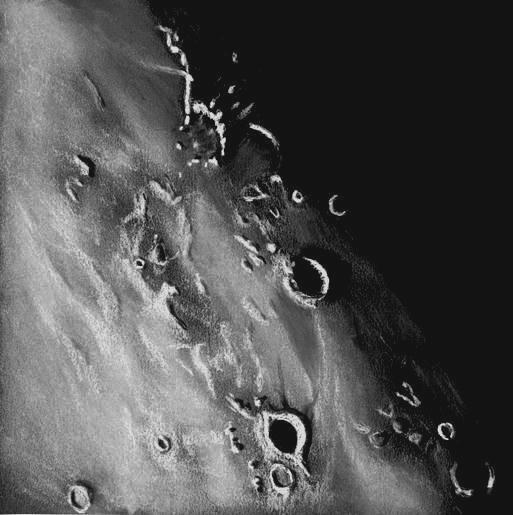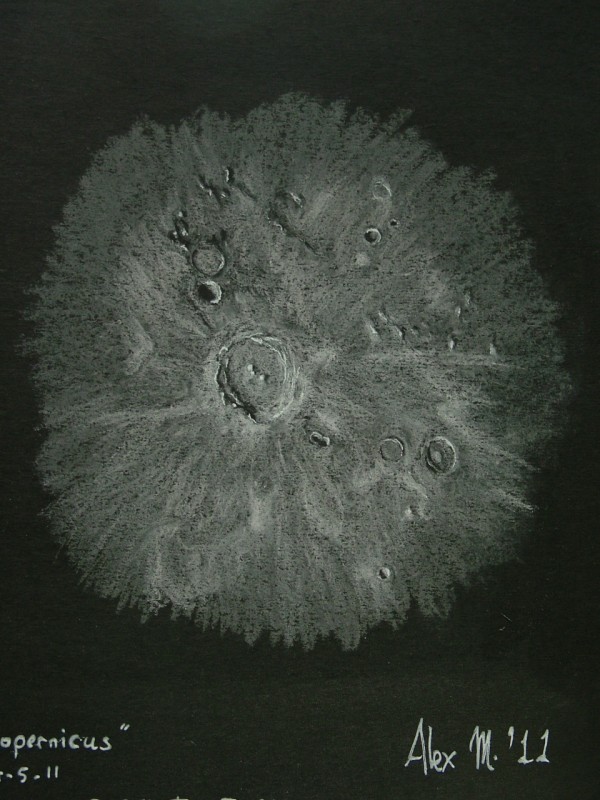
Although recently I have very much interested in Lunar horizon landscpe observation, and also it is a serious hard work that need preparationes, concentrations, patiences to acquire the most valuable results that nobody has seen yet .
So , for me, Lunar horizon observation time is limited , as a or two months of winter season in a year.
Then, other seasons, I useally observe others.
With a fairly good optics [like mine or better…], anyone can find out enormous amount of details on the face of the moon [also on the limb].
One night, very accidentally, I had just seen a much interesting feature in the binocular eyepieces attatched on my faithful 8 inches refractor on along the Yura Mountains range [= Montes Yuras ] , which very resembance to a human’s face … a giant’s face… !! . I was instantlly surprised at the view …. !!!
It’s real dimension , I measured from the diameter of 100 km Plato , must be about within 20 km in length.
Among the many moon sketches of mine , in which shows many curious, grotesque features.. and this gigantic human face is one of that.
Unfortunatelly, by interuption of front roof top, observing time is limited only as 15 minutes, that limits more details on this sktch.
——-[ Upside is the North of moon, Right side is West. ]—–
by K.S.Min
8 inches refractor x340- 500
white paper, graphite pencils, photographed under 300 watt white bulb
At backyard home, in South Korea

